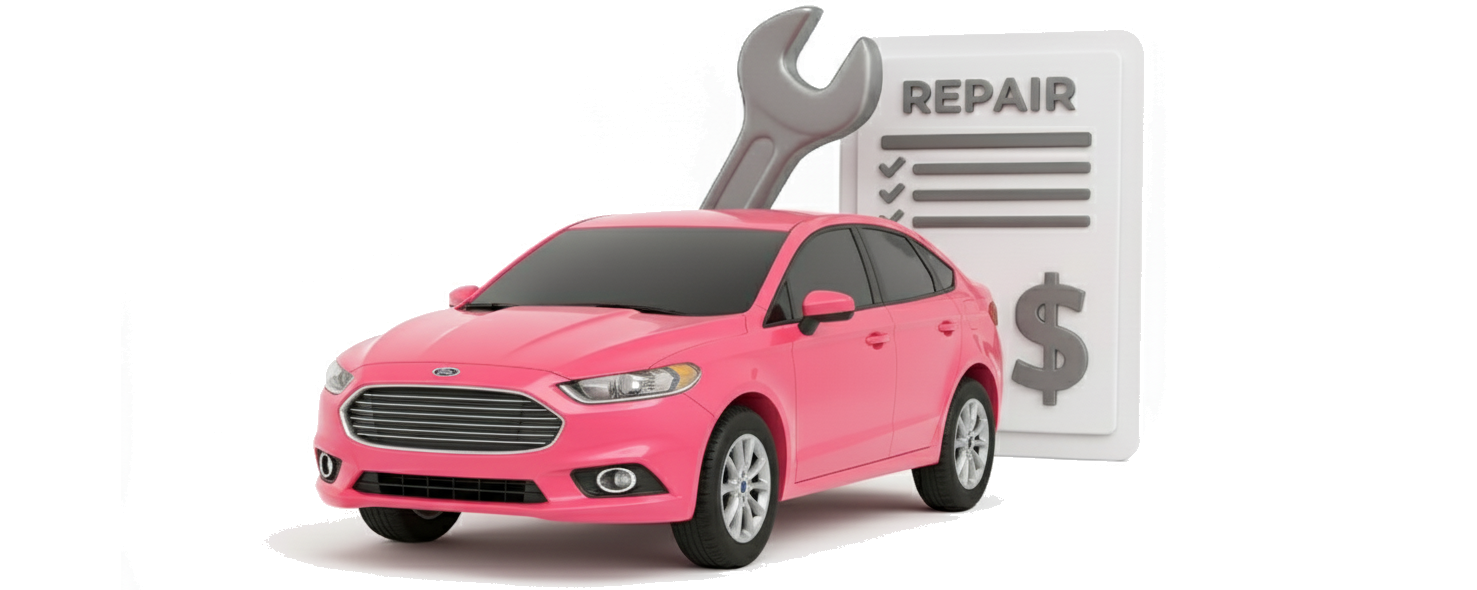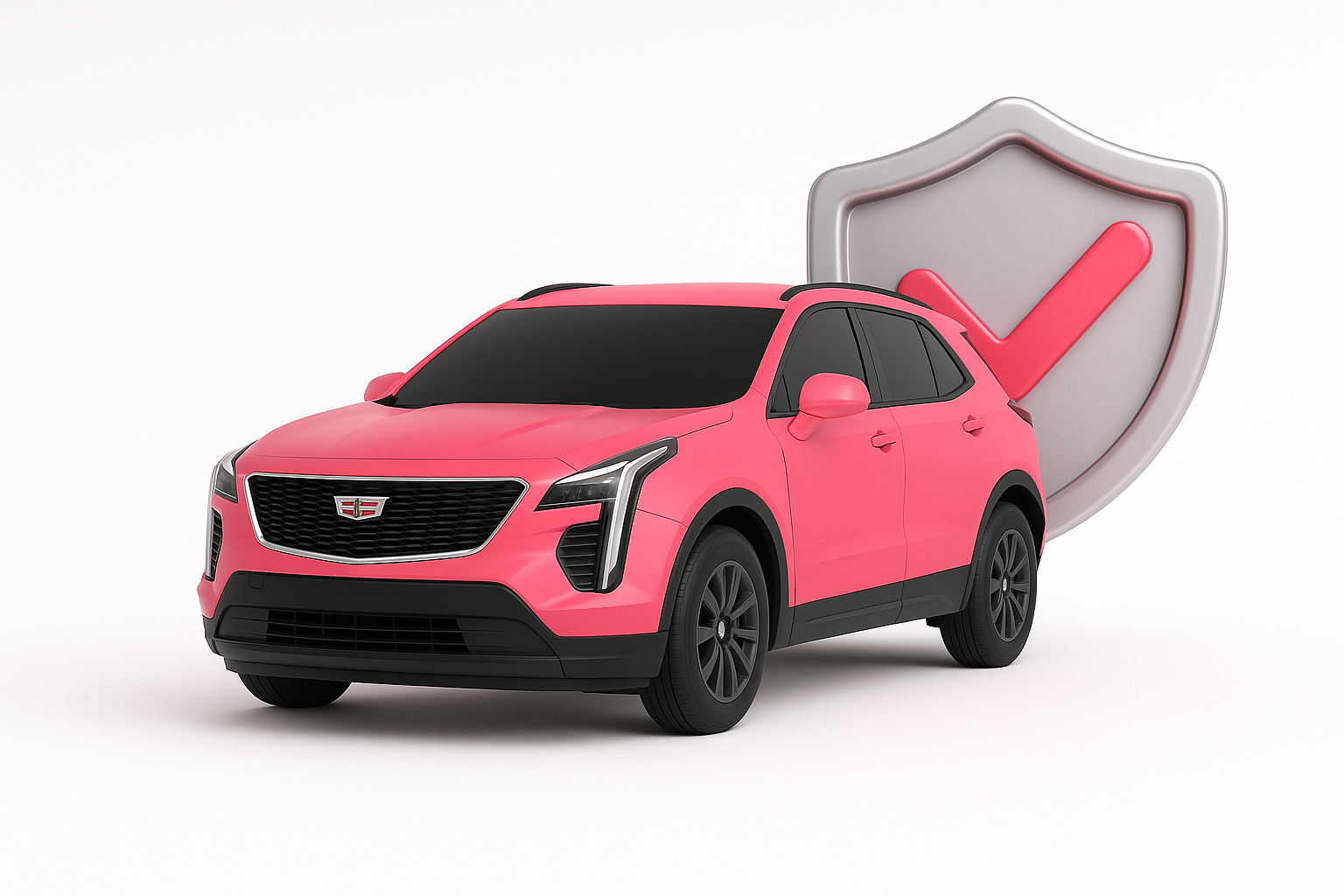That estimate usually includes the pump and fresh fluid and factors in labor. If add-on parts like hoses or a reservoir are needed, expect them to nudge the total higher. Here’s a typical steering pump repair price breakdown:
The Jerry app is your one-stop shop for diagnostics and local repair pricing. Join other customers on the app to gain insights into your situation and improve your repair experience.
Real customers Jerry helped
While pricing can vary based on different factors like location, parts used, and exact vehicle, Jerry uses real customer experiences to show what drivers are paying right now. Here are some examples:
Estimates are modeled based on real vehicle and location data; names have been changed. Actual prices will vary by shop, parts, and vehicle condition.
What is a power steering pump?
A mechanical pump driven by the engine’s belt, it circulates and pressurizes steering fluid, pumping the fluid to the steering gear (rack and pinion or steering box). The pump pressure provides assistance that makes low-speed turning easy and smooth. Many pumps double as the fluid reservoir while others use a separate reservoir with a built-in filter that keeps contaminants from recirculating.
When the pump wears out — usually from bearing wear, internal vane wear or contamination — it can’t maintain pressure quietly and consistently.
What are the signs I need my power steering pump replaced?
Before a pump fails outright, it almost always lets you know. Here are the tells that Jerry customers are seeing:
- Whining or groaning that changes with engine RPM
- Heavy or jerky steering at low speeds
- Foamy or discolored fluid in the reservoir
- Metal glitter in the fluid
- Fluid leaks
- Belt squeal on cold starts or when turning
- Cold-idle whine on Honda/Acura
Cost breakdown: Why the price varies
Jerry customers are seeing several levers that swing the power steering pump cost — here’s how much each tends to move the total:
Pump type:
Remanufactured pumps generally save $100 – $300 compared to new original equipment manufacturer (OEM) units while still offering solid warranties.
Make and model:
A common sedan or compact SUV might fall in the $450 – $700 window. European or luxury models can add $200 – $500 due to part cost and access complexity.
System type:
EHPS units (electric motor driving a hydraulic pump) typically cost more in parts and may require electrical diagnosis in addition to hydraulic service, making the EHPS power steering pump cost often higher.
Labor time and shop rate:
Most cars take 1.5 – 3.0 hours. A higher labor rate ($140 – $180/hr) can add $100 – $200 over a lower-rate independent shop ($90 – $120/hr).
Fluid and flushing:
Expect $20 – $40 for fluid alone; a full flush adds $70 – $150.
Hoses and seals:
If return or pressure hoses are leaking or swollen, parts add $50 – $300 and 0.5 – 1.5 hours of labor — often $100 – $350 more overall.
Belt, tensioner, or pulley:
A worn serpentine belt or noisy tensioner adds $25 – $200 in parts and 0.3 – 1.0 hour of labor — about $50 – $250 more. A pulley swap is usually $20 – $120 for the part.
Reservoir with built-in filter:
Some cars require a new reservoir to protect the new pump. Add $40 – $150 for parts and up to 1.0 hour of labor — roughly $80 – $250 extra.
Taxes, fees, and disposal:
Plan for 5% – 10% in shop supplies and taxes. Core charges (common with reman pumps) are refundable when your old pump is returned.
Your action plan: How to save money
A few smart steps can trim costs without cutting corners:
Confirm the diagnosis before you buy parts:
Check fluid level and condition. Verify noise and if it’s constant or changes with speed. Look for visible leaks at the pump itself, lines, hoses and power steering rack. Confirm pump type. The Jerry app’s diagnostic tool can assist here.
Verify the fluid spec on the cap/manual. Honda/Acura:
Honda PSF only. Many European cars: CHF-11S/CHF-202 (green). Toyota/Lexus varies — check by VIN or owner’s manual.
Price the pump options:
New, Remanufactured, Aftermarket or OEM options. Some pumps are able to be rebuilt with a parts kit as well.
Replace the reservoir if it has an integrated filter:
It’s cheap protection for the new pump.
Do the flush:
Skipping it can void warranties and shorten pump life.
Bundle small jobs:
If the belt is due soon, replace it during the pump job to save 0.3 to 0.5 labor hours later.
Shop-quote playbook (ask for line items and proof):
Pump brand/type and warranty; fluid spec and flush method (vacuum/pressure, not turkey baster); whether the reservoir will be replaced if filtered; hose/clamp condition.
Red flags:
“No flush needed,” can’t name fluid spec, pump-only quote despite metal in fluid.
If you want a quick sanity check before spending, describe your symptoms to Jerry’s AI chatbot for a mechanic-style preliminary diagnosis you can use when speaking with a shop. Staying ahead of maintenance and potential TSBs helps avoid repeat failures. Use the app to view open recalls and your scheduled maintenance — and set reminders so you don’t miss service intervals.
DIY vs. Pro: Can I do this myself?
Swapping a pump isn’t the hardest job, but it’s messy, requires bleeding the system and access can be tight. If DIY is on the table, Jerry’s insights into parts and labor rates offer clarity in making the decision. Use this quick DIY vs. pro power steering pump comparison to decide.
Pro tips for DIY:
- Pre-fill the pump, replace the reservoir if it has a filter and vacuum-bleed if possible.
- Disable ignition, turn the wheel lock-to-lock 10 – 15 times with the front wheels off the ground to purge air, and then start and avoid full lock while you finish bleeding.
- Tiny bubbles briefly after install can be normal; persistent foam/whine = air leak. After the first drive, recheck fluid level and look for leaks.

Related repairs
Because the steering system is interconnected, Jerry customers often address these items during a pump job to ensure the fix sticks.
- Power steering fluid flush: $70 – $150.
- Return or pressure hoses: $100 – $400 each installed.
- Reservoir (with integrated filter): $100 – $250 installed.
- Inline return filter (when metal is found): $50 – $120 installed.
- Serpentine belt: $75 – $250 installed.
- Belt tensioner or idler: $150 – $350 installed.
- Pulley: $60 – $200 installed.
- Steering rack replacement cost (if contaminated or leaking): $1,000 – $2,000 installed.
If your old pump sent metal through the lines, flushing alone may not save a damaged rack. Replacing the reservoir and performing a thorough flush helps protect everything downstream.
What our customers are asking
-
How long can I drive with a bad power steering pump?
-
Is a fluid flush really necessary?
-
Can a bad pump damage my steering rack?
-
How long does the repair take?
-
My car has electric power steering (EPS). Is this guide relevant?
-
How can I stay ahead of this in the future?

Spencer Clayton is a mechanic, writer and fabricator who has hands that know their way around engines and a passion for storytelling. He’s diagnosed complex faults, built high performance engines and custom fabricated everything from fine detail parts to entire chassis while sharing how things work and why they matter. His background in everything from dealership technician work to building high performance cars spans a large breadth of experience, and he is driven by a love of all things automotive and a desire to share knowledge.

Steve Kaleff began working on cars at the very young age of nine years old, when his dad actually let him make fixes on the family car. Fast forward to the beginning of a professional career working at independent repair shops and then transitioning to new car dealerships. His experience was with Mercedes-Benz, where Steve was a technician for ten years, four of those years solving problems that no one could or wanted to fix. He moved up to shop foreman and then service manager for 15 years. There have been tremendous changes in automotive technology since Steve started his professional career, so here’s looking forward to an electric future!

Nick Wilson is an editor, writer, and instructor across various subjects. His past experience includes writing and editorial projects in technical, popular, and academic settings, and he has taught humanities courses to countless students in the college classroom. In his free time, he pursues academic research, works on his own writing projects, and enjoys the ordered chaos of life with his wife and kids.










